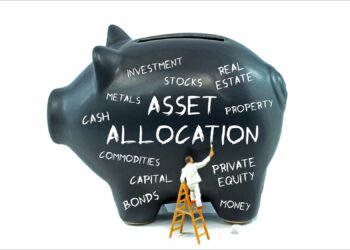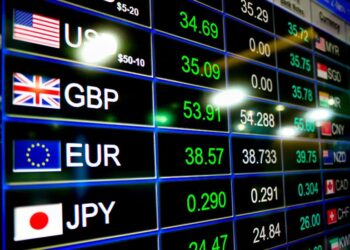While markets are currently pricing some delays in monetary easing, their base case implicitly remains that of a return to economic normal.
After all, the imbalances stemming from the pandemic and the Ukraine invasion supply shocks are receding. Inflation is normalising, central banks’ balance sheets are being shrunk, natural gas and energy prices are way off their peak, and the volatility of economic data is back to cruise level.
Unfortunately, we do not believe the global economy is close to finding a new balance and is even less likely to be reverting to an ‘old normal’.
Rates are bound to stay substantially above the last decade’s average, as emphasised by intensifying doubts about the true level of the neutral rate, seen settling around 2 per cent+ in developed market countries coming from 1 per cent. Once bitten by surging inflation, central banks will also likely be twice shy going forward.
Global growth has proved to be more resilient to surging rates than expected. The absence of widespread economic dislocations (except in commercial real estate) implies that the ‘repair phase’ will lack impetus.
Following its spectacular rise over the last two decades, China now has to fix its excess capacities, especially in the property sector. Its contribution to global growth will be structurally lower, with multiple implications for commodities, investment and inflation. Given the weakness of domestic consumption, China will likely focus on exports, further straining its partners’ current accounts and diplomatic tensions.
Looking at resources, the supply of resources (supported over the last decade by the US’ shale discoveries, commodity price wars, amid limited geopolitical tensions) will be a greater source of struggle. Changes in the labour markets and in consumption behaviors (switching from goods to services) induced by the pandemic will also imply more uncertainty in economic modeling.
Finally, economic cycles will likely be shorter than usual, probably 3-5 years compared to 7-10 years in the past, due to less fluid trade and supply chains, more volatile inventories, demand frequently changing, and faster information/capital flows.
For all these reasons, once monetary pivots have started, we expect the next phase of the cycle to be a source of multiple uncertainties, leading investors to seek haven in gold.
Debasement risk
Debasement risk is accelerating and will impose painful adjustments in the long run. With global debt running north of $300tn and 3.3x world GDP, the recent rush to gold and cryptos do not look that surprising. Outflows from fiat currencies started by fall 2022, shortly after inflation reached its peak, with a magnitude last seen in the late 70s-early 80s and around GFC.
We do not expect a pending meltdown though, considering i) tighter current monetary policies and moderating macro liquidity, ii) quantitative tightening for a few more months and a gradual increase in longer-term duration funding of US deficits, iii) debt sustainability not under immediate pressure as inflation is easing debt metrics, with no apparent stress in EU periphery countries, and iv) only few currencies facing serious devaluation.
Instead, we expect gold to factor debasement risk via fiscal deficits that might keep on beating their own records ahead of US elections and as the energy transition accelerates. The growing reluctance to store reserves in Western currencies is providing strong extra support.
In particular, countries perceived as US opponents have been hoarding gold since the annexation of Crimea in 2014. The US’ recent pledged attempts to seize $285 billion in Russian assets that were frozen in 2022, likely contributed to the recent spike in gold.
The uncertain medium-term inflation equilibrium will require hedges. Gold provides a strong hedge against inflation when at extreme levels (hyperinflation, stagflation, or deflation) and as long as policy response remains unconvincing. Hence the elevated gold correlation with inflation volatility. In the short-term, healthy US consumption, expanding global liquidity, and resilient global growth are sending doubt regarding disinflation especially in the US, which is not particularly supportive for gold as it also delays monetary pivots.
In the longer run, a tug of war between inflationary pressures (stalling globalisation, re-onshoring, greater supply-chain buffers, bubbling debt) and deflationary factors (AI-driven productivity, below-par economic growth, and mixed inflation implications from demography and the energy transition) will require hedging, boosting gold.
A structural rise in geopolitical risk and in domestic instability will favour gold. The world order is changing and geopolitics will likely be a lasting variable for markets. The intensifying US-China rivalry nd a gradual slide into a new cold war, more versatile power alignments, an uncoordinated response to global issues, the declining Western model influence, an accelerating arms race, more protectionism and regional blocks, the struggle to secure supply of base resources are all too well known ingredients.
A ballooning debt has also most often been a powerful transmission channel for conflicts.
Domestic stability is also eroding, fueled by inequalities and an unsustainable distribution of wealth, resulting in increased political fragmentation and a weakening social pact in Western democracies.
Several key disruptions will also add increased pressure on societies, including the challenges and cost of climate change, the AI fast revolution, and population ageing. The extreme gold current contango usually signal a bad outcome.
How geopolitics impacts markets greatly varied over time though, function of the geography and contagion risks, near and longer term geostrategic and economic implications, as well as countries’ uneven ability and resources to navigate these risks.
Amongst the significant shocks we analysed since the 1930s, we find geopolitics had the biggest impact on gold, volatility, or oil when markets were not distracted by weak macro conditions. In contrast, the impact was more diluted and heterogeneous at times of weak growth or stagflation. As supply shocks from the pandemic gradually ease, we expect a growing gold sensitivity to geopolitics.
Why to hold gold in portfolios?
- It’s a liquid market with limited counterparty risk. The most traditional way of investing in gold is by buying bullion bars or coins. Investors can also purchase gold exchange-traded products (including ETCs) or gold certificates, to avoid the risks and costs associated with the transfer and storage of physical bullion. Investors can alternatively invest in gold via derivatives, such as forwards, futures and options. The indirect way to have exposure to the price of gold is through shares of gold mining companies.
- Gold is a particularly attractive diversifying tool. The golden age of diversification is over: the equity/bond return correlation – now in positive territory – will likely gradually revert to neutrality, giving limited statistical comfort. The alternate obvious safe havens (the dollar, to some extent the Swiss franc) are themselves fiat currencies subject to growing defiance. Other hedging means come with strings attached: options and volatility are short-term strategies, real assets are illiquid, cryptos are not mature enough and face key questions regarding supply control and cybersecurity.
- Gold offers protection against a wide range of risks regardless of their nature, geographic location, or timing (provided they have global fallout): a nice substitute for complex customized hedging strategies. Importantly, as buy-and-hold investors (monetary institutions, pension funds) are dominant market players, gold usually tends to price risks long in advance, while spotting right entry points is less decisive.
- Gold is not only an insurance, but also an investment vehicle. Inflation-adjusted gold prices are still far from their past highs and gold remains under-owned (less than 5% in diversified allocations, 13% of world FX reserves, the majority of which held by DM central banks, ETF inflows to resume once rate cuts have started). The opportunity cost to hold gold will improve when rates have pivoted (historically gold then jumped around +10%) while the embedded geopolitical premium remains mild. All in all, gold has further upside potential in our view. Our fair value models suggest $2,300/oz as an initial milestone.
- At a time when most investors are raising their bond allocation, gold can mitigate the higher resulting exposures to fiat currencies. Gold is also particularly attractive for non-dollar portfolios, avoiding gold returns to be offset by a rising dollar at times when investors seek safe havens.
- In relative terms gold is attractive compared to mainstream assets, a majority of which are currently priced for perfection while these deliver smaller yields (net of cash and adjusted for risk) than usual.
Jean-Baptiste Berthon is senior cross asset strategist at Amundi Investment Institute





